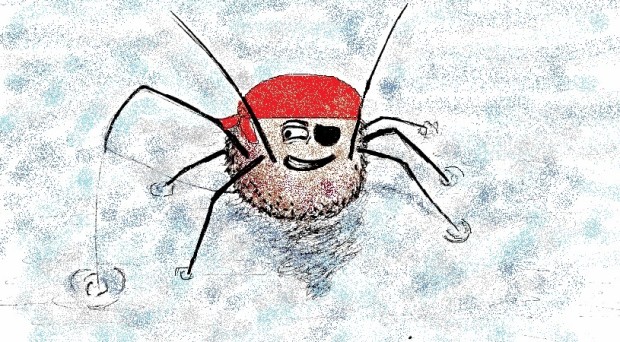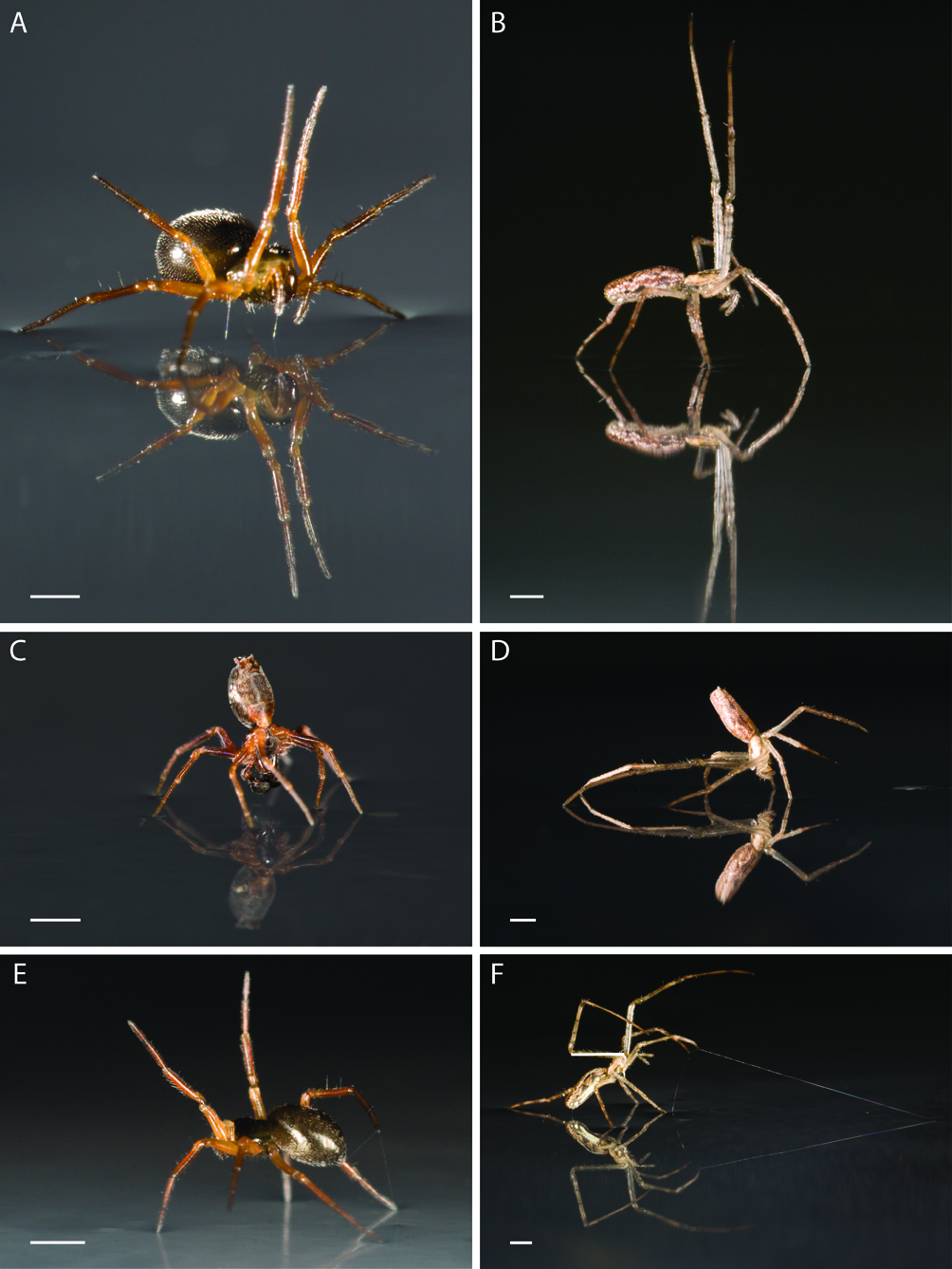
Flying spiders
For the arachnophobes among us, a flying spider might sound like something from a nightmare. Yet such a sight is a common one in nature. Many species of spider travel through the air using a technique known as ‘ballooning’. A spider launches its silk upwards where it forms a triangular parachute which catches the wind and propels the spider through the air.
Ballooning allows spiders to disperse to new habitats should they find their current home lacks food, becomes overcrowded, or is flooded by a sudden storm. However, while spiders can control when they take to the air, what happens next is much more uncertain.
Ballooning spiders can move up to 30km in a single day when the wind conditions are right, but many flights will be of much smaller distance. More of an issue for spiders is the limited control they have over where they land.
The possibility of landing in unsuitable habitat lends an element of risk to ballooning. In particular it has been felt that landing in water (whether this be a river or ocean, or merely a large puddle) would likely be fatal to an unfortunate aeronautical spider.
Aerial dispersal has thus been seen as something of a roulette wheel for spiders; the possible benefits of moving to better habitat is counteracted by the risk of a watery grave. Yet new findings, published today in BMC Evolutionary Biology, suggests spiders can not only survive on water, but actively sail across it.
On the crest of a wave
The research was led by Morito Hayashi and Sara Goodacre of the University of Nottingham. They collected 325 adult spiders (from 21 different species) from a number of small islands located in two local nature reserves. These spiders were then taken back to the universities ‘Spider Lab’ for testing.
The spiders were placed in a tray filled with water while wind, generated by a pump, was blown on them; a reasonable approximation of the conditions a ballooning spider landing on water would find themselves in.
All the spiders were found to have water repellent legs, but the behavior of the spiders when placed on water varied considerably. Most notably, many of the spiders demonstrated what the researchers term ‘sailing’ behavior.
Some spiders raised their front legs, which acted as sails, catching the wind and letting the spider glide across the water. Others practiced ‘upside-down sailing’, adopting a handstand like position and using their abdomen as a sail. Sailing spiders were also seen to use their silk as an anchor, either to slow themselves down or to catch on to stationary objects which they then pulled themselves on to.

Spiders that behaved like this were capable of sailing in both fresh and salt water and could happily glide over the surface of even turbulent water. Notably, these behaviors were almost never observed when the spiders were placed on dry land, strongly suggesting they are specifically water-based behaviors.
The spiders were also tested on dry land for signs of ‘tiptoeing’ behavior, a precursor to ballooning: the spider raises itself up on the tips of its legs and points its abdomen skywards. Individuals that tiptoed were significantly more likely to also exhibit sailing behaviors; that is, keen balloonists are also accomplished sailors.
Sailing for distant shores
While movement across water surfaces has been reported in Dolomedes raft spiders, who hunt aquatic prey, this is the first time such behavior has been reported in strictly land dwelling spiders.
The evolutionary advantage to ballooning spiders who can also sail is clear: landing on water, instead of being terminal, becomes a mere inconvenience. Such spiders will also have greater protection from flash floods.
Sailing could also help explain why spiders are so often the first animals to colonize new lands like volcanic islands. Ballooning is clearly a key part of how this is achieved; airborne spiders have been reported landing on ships thousands of miles out to sea. Combine this with the ability to sail on water and withstand long periods without food and one can see how pioneering spiders find their way to far distant lands.
Morito Hayashi and Sara Goodacre discuss their study, and show off some sailing spiders, in this video:
Comments